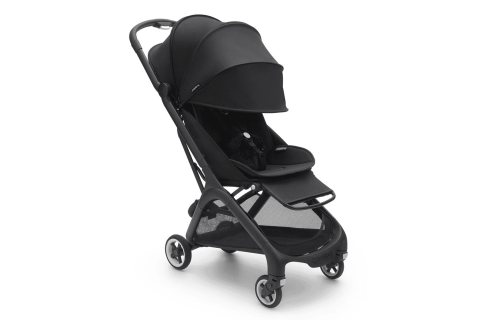Baby Products Getting Expensive with Tariffs on Chinese Imports; Retailers Concerned About Low Inventory Levels
The Trump administration US tariffs on Chinese imports have already started putting unexpected pressure on American families, particularly those with young children. As inflation continues to burden household budgets, rising costs of essential baby gear—largely imported from China—are pushing many families to the brink. With most strollers, car seats, bassinets, and changing tables manufactured almost exclusively in Chinese factories, the baby products sector is facing acute vulnerability. Supply chain disruptions are now threatening shortages, as importers freeze shipments in response to skyrocketing import duties. This latest development underscores how trade policy can directly impact everyday American life.
Tariffs Trigger Price Shock Across Baby Essentials
The latest increase in U.S. tariffs on Chinese imports has more than doubled the cost of several child-related goods, including cribs, car seats, and strollers. These aren’t luxury items—they are regulatory-mandated, safety-certified necessities for every young family. Yet, families are now being asked to pay significantly more for products once considered routine purchases.
With inflation already eroding disposable income, these additional costs are landing at the worst possible time for young parents trying to maintain stable household finances.
Dependence on China Creates Structural Exposure
Roughly 70% of all baby products sold in the U.S. are manufactured by American brands operating factories in China, according to the Juvenile Products Manufacturers Association (JPMA). Unlike sectors such as electronics or apparel, where manufacturing has gradually diversified into countries like Vietnam, India, and Thailand, the children’s goods industry remains heavily reliant on Chinese production lines.
This persistent dependence stems from deep-rooted supplier relationships and the fact that Chinese factories are uniquely equipped to meet the U.S.'s complex child safety and quality standards. Shifting such a finely tuned supply chain is neither fast nor cheap.
Manufacturers Hit the Brakes Amid Regulatory Uncertainty
Facing volatile pricing, many manufacturers and retailers have suspended months of planned shipments into the U.S., creating a looming supply gap that could trigger retail shortages as early as this month. For products that are critical to infant safety, a delay in availability is more than an inconvenience—it’s a crisis for new parents.
Retailers are grappling with difficult decisions: pass on rising costs to consumers, absorb shrinking margins, or pare down product variety in stores. None of the options bode well for consumers.
Safety Standards Complicate Relocation Strategy
The reluctance to move production outside of China is rooted in compliance with U.S. safety regulations, which are especially stringent in the juvenile products category. Not every factory in Southeast Asia is capable of producing child car seats or bassinets that meet these standards without extensive retraining, retooling, or certification delays.
In effect, the industry is caught in a regulatory bind—pushed by trade policy to leave China but held in place by the complexity and liability risk of non-compliance elsewhere.
Potential Shortages on the Horizon
With container volumes already slowing and new orders on hold, experts warn that shortages of cribs, strollers, and changing tables could begin surfacing in major U.S. markets within weeks. Unlike toys or apparel, these aren’t seasonal goods—they’re time-sensitive essentials. Delays and price hikes will disproportionately affect low- and middle-income families, many of whom are already under economic stress.
Industry watchers believe the bottlenecks will become most visible in big-box retail chains and online marketplaces, where inventory cycles are tightly synchronized with global shipping flows.
Broader Economic Implications for Inflation and Family Spending
Rising prices for baby gear have ripple effects across the economy, influencing family formation decisions, savings behavior, and even consumer sentiment. At a macroeconomic level, when basic goods become costlier due to policy-induced friction, it adds complexity to the Federal Reserve’s effort to tame inflation without stifling demand.
A prolonged increase in baby gear prices could deter spending in adjacent categories—clothing, childcare services, or home goods—and lead to contraction in sectors already showing signs of weakness.
Trade Policy as a Family Policy Issue
This latest tariff fallout highlights a critical blind spot in economic policymaking: how macro-level decisions reverberate into kitchen-table consequences. While tariffs are often discussed in geopolitical or industrial terms, their effects are now being felt in nurseries across the country.
The inability to source baby essentials affordably and reliably risks becoming a symbolic flashpoint—an indicator that globalization’s unraveling has reached the most personal corners of American life.
An Urgent Wake-Up Call for Policy Coordination
As the cost of raising a child in America continues to climb, trade tensions are making it harder for families to access the very products meant to safeguard their children. With the baby gear sector structurally tied to Chinese supply chains, tariffs threaten not just margins, but livelihoods and security. There is a growing need for policymakers, regulators, and industry leaders to chart a more coordinated path—balancing national interests with the everyday realities of young parents navigating an already uncertain economic landscape.
